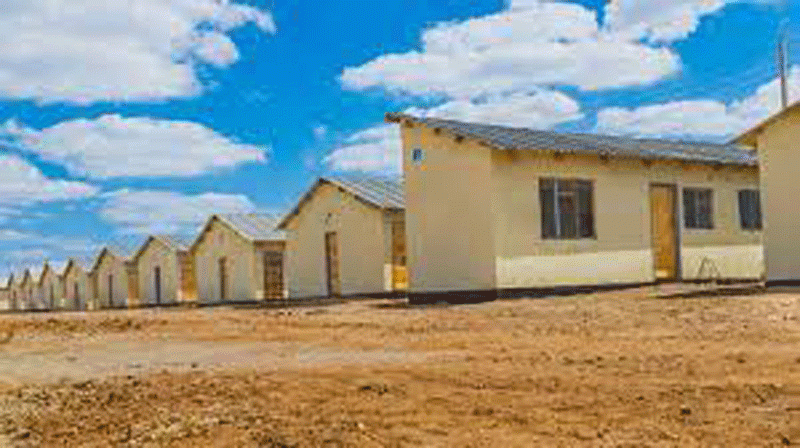
In recent years, cluster developments have garnered significant attention as a strategy to stimulate economic growth and foster regional development in various countries.
Zimbabwe, too, has witnessed the emergence of cluster developments in different suburban areas, with a particular focus on Harare as the prominent city. However, a critical question persists: do these cluster developments bring about positive or negative consequences for the nation?
Cluster housing development entails the grouping of multiple individual housing units on a larger parcel of land. This concept aims to optimize land utilization, preserve open spaces, and cultivate a sense of community while simultaneously affording individual homeowners their own private dwellings.
Key features and characteristics of cluster housing developments include:
Clustering of Units: In cluster housing developments, individual housing units are closely grouped together, often in a compact manner. These units can encompass single-family homes, townhouses, or even apartments.
Open Spaces: Cluster housing developments typically incorporate open spaces such as parks, playgrounds, or common green areas within the community. These shared areas facilitate community interaction, recreational activities, and relaxation.
Shared Amenities: Depending on the specific development, cluster housing may include shared amenities like swimming pools, clubhouses, fitness centers, walking trails, or community gardens and parking bays. These amenities are commonly maintained and managed by a homeowners' association or a similar entity.
Design and Architecture: Cluster housing developments often adhere to a cohesive design and architectural style, aimed at creating a visually unified community. This may involve consistent use of building materials, architectural features, or landscaping elements.
- Cluster houses: A curse or blessing?
Keep Reading
Infrastructure and Services: Adequate infrastructure and services, such as roads, utilities, and waste management systems, are usually provided to support the cluster housing development. These may be developed and maintained by the developer or local authorities.
Homeowners' Association: Many cluster housing developments feature a homeowners' association (HOA) responsible for managing and maintaining common areas, enforcing community rules and regulations, and collecting fees or assessments from residents to cover shared expenses.
Community Interaction: Cluster housing developments often foster a sense of community and encourage interaction among residents. Common spaces, community events, and shared facilities provide opportunities for neighbors to socialize, collaborate, and build relationships.
Land Use Efficiency: Cluster housing developments aim to optimize land use by reducing the amount of land required for individual housing units. This enables the preservation of larger open spaces or undeveloped areas within or adjacent to the community.
Environmental Considerations: Some cluster housing developments incorporate environmentally friendly features, such as green building practices, energy-efficient infrastructure, or sustainable landscaping. These initiatives promote environmental sustainability and reduce the ecological footprint of the community.
Zoning and Regulations: Cluster housing developments are subject to zoning regulations and local planning guidelines. These regulations govern aspects such as density, setbacks, building heights, and the provision of open spaces, ensuring that developments align with the intended vision and objectives.
Cluster housing developments strike a balance between individual homeownership and community living, providing residents with a sense of belonging and access to shared amenities while maintaining their privacy and independence.
In Zimbabwe, cluster housing developments address several pressing issues within the context of urbanization, population growth, and housing shortages. Some of the key problems these developments help tackle include:
- Infrastructure Challenges: Urban areas in Zimbabwe face increased population pressure, resulting in difficulties in providing adequate infrastructure such as water supply, sanitation facilities, electricity, sewer systems, and roads. Cluster housing developments help alleviate these challenges by concentrating development in specific areas, enabling efficient resource utilization and better infrastructure management.
- Housing Shortage: Zimbabwe experiences a severe shortage of affordable housing, particularly for low-income individuals. Cluster housing developments offer more affordable options for low-income families, addressing the housing needs of the urban population. However, it is worth noting that there is limited evidence of cluster housing developments effectively catering to low-income individuals, as most developments are being undertaken in low and medium-density segments.
- Adaptation to Changing Family Dynamics: Traditional family homes on large plots are becoming less relevant, and the challenges faced by surviving spouses who possess valuable assets but limited financial resources are significant. Cluster housing developments cater to smaller families and provide lock-up-and-go properties suitable for diaspora residents who are accustomed to international standards and readily purchase such properties.
- Efficient Land Use: Cluster housing developments offer a more compact and efficient approach to land utilization, addressing the challenges posed by rapid urban population growth and limited resources for urban infrastructure development. However, cluster developments also give rise to certain challenges that, if not promptly addressed, can result in dire consequences for the nation. These challenges encompass infrastructure strain, densification without a corresponding expansion of infrastructure and services, and potential disregard for wetlands and social service reservations.
- Infrastructure Challenges: The increased population pressure in urban areas presents challenges in providing adequate infrastructure, including water supply, sewer systems, and other essential services. Some residents argue that cluster housing development in existing suburbs occurs without a corresponding expansion of infrastructure and services, such as schools, community halls, clinics, and shopping centers. This situation negatively impacts the overall environmental and residents' wellbeing.
- Densification without Infrastructure Expansion: The policy of densification in housing provision has raised concerns about the development of cluster houses and flats without a corresponding expansion of infrastructure and services. These concerns encompass challenges related to water and sewer infrastructure, as well as other crucial services.
- Disregard for Wetlands and Social Service Reservations: Residents argue that new housing developments are taking place without due consideration for wetlands, recreational spaces, and areas designated for social services such as schools and clinics.
Addressing these challenges is essential for sustainable urban development and the well-being of residents in cluster housing developments. It requires proactive measures to ensure that infrastructure is adequately expanded, services are efficiently provided, and environmental considerations are taken into account.
Effective urban planning, collaboration between developers and local authorities, and adherence to zoning regulations and guidelines can contribute to the mitigation of these challenges and fostering balanced and sustainable cluster housing developments. In summary, the question of whether cluster housing developments are a curse or a blessing remains a subject of ongoing debate. At present, it is increasingly apparent that the demerits of such developments outweigh their merits.
The discourse surrounding their impact encompasses a range of factors, including housing demand, community building, infrastructure, densification without necessary infrastructure expansion, and urban planning. Regrettably, inadequate attention has been given to these key considerations.
- Juru is chief executive officer at Integrated Properties.











